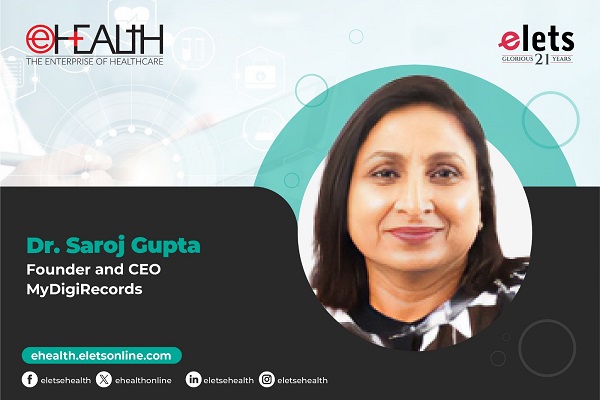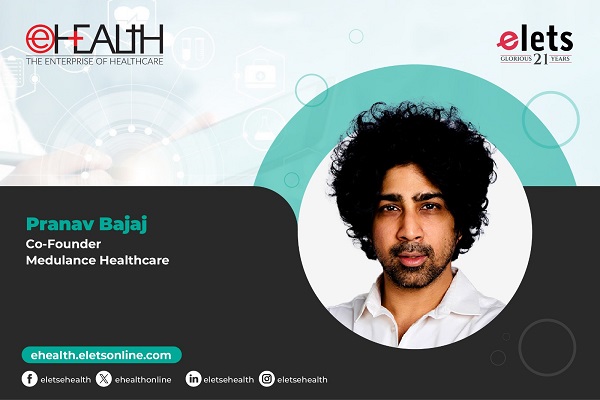What is your opinion regarding current state of IT adoption in public and private healthcare facilities in India? How the domestic healthcare industry is fairing in terms of elevating their efficiency through IT implementation?
IT adoption in healthcare facilities is seeing an upswing with more and more companies investing in enterprise-wide solutions. The first phase of IT enablement in these organizations was with a view to enable operations and hence was more in terms of point solutions. However in the recent years organizations are looking at IT solutions that can enable their growth engine both from planning and ution of the growth initiatives as well as providing better and consistent care on a larger scale as the organization sets up more and more units across the country.

So we have organizations evincing interest in IT solutions like a integrated Hospital Information System which not only automates but also optimizes and standardizes transaction and clinical processes across multiple locations based on industry best practices; Healthcare providers are also looking at integrating patient records in a intra and inter hospital scenario through browser based EMR solutions which further enhances their promise of highest quality of care across the chain. Integration of IT solutions and lab equipments is another area of interest for the segment.
IT adoption in healthcare facilities is seeing an upswing
To summarize, today the healthcare segment is witnessing a move from point solutions to a approach where organizations look at a integrated solution including software applications, infrastructure products and services and maintenance of the same.

Although large corporate healthcare providers have gone ahead in automating their operations, most government hospitals are still lacking basic IT facilities. Do you attribute this gap to financial constraints of government hospitals or is it due to a lack of understanding and/or initiative of decision-makers in the government?
There is a realization of the criticality of IT enablement in the public health space. So a large number of projects are in the anvil. However the ution and rollout of these projects needs a strong focus in the coming years.
Wipro has been involved in the ution of a integrated HIS for six hospitals of Municipal Corporation of Delhi and has enabled all the functions of each hospital in the last 12 months. Currently we are integrating patient records across these hospitals thus enabling uniform records at citizen level.
Often the primary concern for small and medium service providers pertains to relatively longer time frame for realising RoI on IT investment (primarily due to their smaller scale of operations). What solutions are on offer from Wipro to cater to this segment and address the need?
We in Wipro have given a lot of thought to this both in terms of the potential of this segment and their uniqueness of needs. The segment is big in India with more than 800 new hospitals being set up every year and most of them are in the SMB segment. This segment�s IT initiatives have been restricted to automation of point areas like billing, pharmacy etc with no integration, no automation of clinical side and no integration across multiple sites for orgs with more than 1 hospital/nursing home.
The reason for this has been two-fold: lack of availability of solutions catering to their needs and price points and second a lack of fast track implementation process.
We have come up with a solution the Wipro HIS Lite which was launched in June this year which addresses these issues both in terms of the breadth of the product and its price and in terms of a fast track well thought out 4-6 week implementation process. We have got 10 customers in the last 3 months across the country and see this as the start point for a huge upswing.
What is the current market share of Wipro Healthcare in India and that in Asia, Middle East, Europe & US? What is your expectation in terms of market capitalisation in India over the next two years?
Wipro has a strong leadership presence in the healthcare provider space in India and Middle East. Wipro has more than 75 healthcare providers as its customers in this geography and is growing at more than 30% on year-on-year basis.
Considering the lack of basic healthcare infrastructure and severe paucity of trained referral personnel in rural India, how can the benefits of ICT effectively address the challenges faced by rural population?
High penetration and availability of bandwidth, telemedicine, remote diagnostics etc can help in reaching out expert advice and care to people in remote areas and can mitigate the paucity of trained personnel.
Be a part of Elets Collaborative Initiatives. Join Us for Upcoming Events and explore business opportunities. Like us on Facebook , connect with us on LinkedIn and follow us on Twitter , Instagram.












